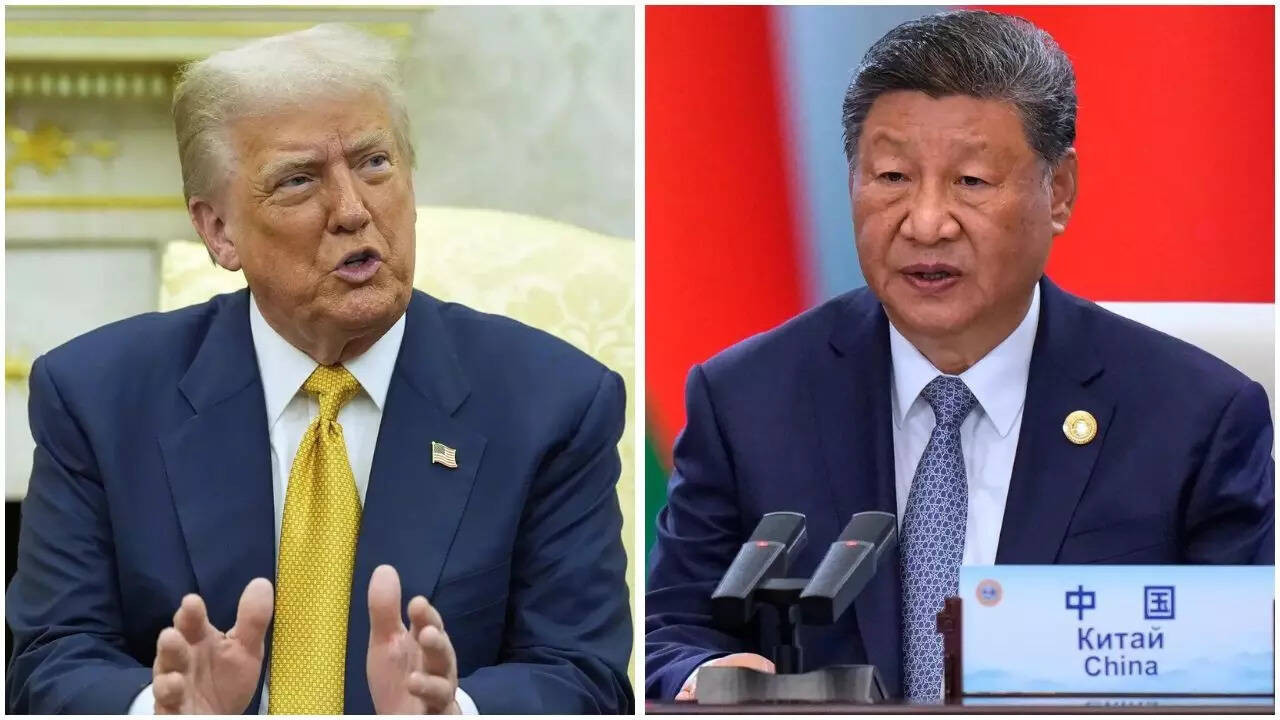China’s export growth slowed in August, missing forecasts due to a sharp decline in shipments to the US, despite gains in Europe and Southeast Asia. Imports also grew at a slower pace, contributing to a trade surplus. Analysts attribute this to fading frontloading effects and trade diversion amid ongoing US-China trade tensions, with expectations of continued export pressure.
Shifting Sands: Is the Tide Turning in the US-China Trade Tug-of-War?
For years, the world has watched the US and China engage in a high-stakes economic dance, a pas de deux punctuated by tariffs, accusations, and shifting alliances. But recent data suggests that the music might be changing, and the steps are becoming less predictable. While the headlines often focus on the political maneuvering, a deeper look at the numbers paints a more nuanced picture of a relationship in flux.
China’s export growth, the engine of its economic powerhouse, has shown signs of slowing. While it’s too early to declare a definitive trend, the deceleration raises questions about the resilience of China’s export-driven model in a global landscape increasingly shaped by protectionist winds and geopolitical uncertainties. But the real eye-opener? The dramatic plunge in shipments from the US to China. This isn’t just a minor dip; it’s a significant contraction that demands closer scrutiny.
Decoding the Decline in US Shipments to China
What’s behind this considerable fall? The obvious culprit is the legacy of the tariffs imposed during the Trump administration. These levies, designed to punish China for alleged unfair trade practices, have undeniably disrupted established supply chains and made US goods less competitive in the Chinese market. While some tariffs remain in place, their lasting impact is now undeniably visible in the trade figures. Businesses, facing higher costs and uncertain market access, have started seeking alternative suppliers. The search for diversity is impacting old assumptions.
But tariffs are not the whole story. The global economy is experiencing a period of profound transformation. Factors like shifting consumer demand, technological advancements, and evolving geopolitical dynamics are all contributing to the reshaping of international trade flows. China’s own economic evolution, with its growing focus on domestic consumption and technological self-reliance, also plays a role. Are US companies adequately adapting?
The Ripple Effect on Global Supply Chains
The tensions have spurred companies to rethink their global sourcing strategies. The era of unquestioning reliance on China as the world’s factory is giving way to a more distributed model, with nations like Vietnam, Mexico, and India emerging as attractive alternatives. This diversification, while potentially beneficial in the long run, comes with its own set of challenges. Establishing new supply chains, navigating different regulatory environments, and ensuring consistent quality are all complex undertakings that require significant investment and expertise. The search for alternatives has been driven, in no small part, by the desire to mitigate risk in a world that seems increasingly prone to geopolitical surprises.

Beyond Trade: A Broader Geopolitical Landscape
It’s crucial to understand that the economic relationship between the US and China is inextricably linked to broader geopolitical considerations. The rivalry extends far beyond tariffs and trade balances. It encompasses issues such as technological dominance, military strength, and influence in international institutions. This multifaceted competition adds another layer of complexity to the already intricate economic relationship, making it difficult to isolate the impact of trade policy alone. Furthermore, global alliances shift, impacting the nature of the two countries’ dealings.
Navigating the Future: What’s Next?
The recent trade figures serve as a stark reminder that the relationship is not static. It’s a dynamic process shaped by economic forces, political calculations, and strategic considerations. How both nations navigate these shifting sands will have far-reaching consequences for the global economy. De-escalation requires careful negotiations, a willingness to compromise, and a recognition that cooperation, even in a competitive environment, is essential for shared prosperity. The possibility of increased tariffs and the risk of a deeper trade war cannot be dismissed, and the global business community must prepare for a range of potential outcomes. See this article for insights on preparing for economic uncertainty.
The complexities of US Shipments to China and the broader US-China trade landscape demand attention. While the path forward remains uncertain, one thing is clear: the world is witnessing a significant realignment of economic power, and the choices made by the US and China will shape the global order for decades to come. Whether that realignment leads to greater cooperation or further fragmentation remains to be seen.







